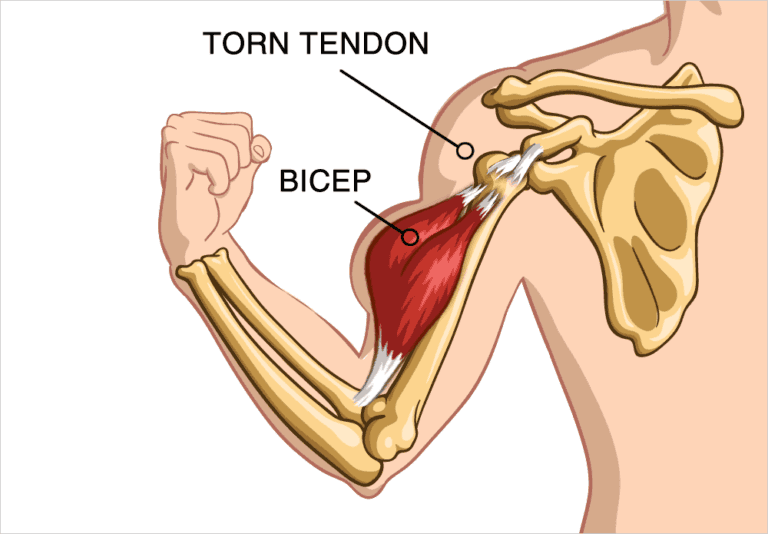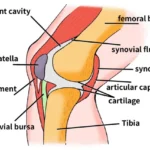If you’ve noticed a bulge in your upper arm resembling Popeye’s muscle, you may have experienced a biceps tendon rupture. This condition, more commonly occurring in men over the age of 35, is often related to strenuous activities such as weight lifting or contact sports.
Understanding Biceps Tendon Rupture
The biceps muscle, located at the front of the arm, is crucial for bending the elbow and rotating the forearm. It is attached to bones by two tendons: one at the shoulder and one at the elbow. A rupture can occur at either point, but ruptures at the elbow are less common than those at the shoulder. When the tendon at the elbow ruptures, the muscle retracts and forms a noticeable bulge in the upper arm.
Causes and Symptoms
A biceps tendon rupture typically occurs when the flexed elbow is suddenly straightened against resistance, such as when lifting a heavy object. This action can cause the tendon to tear, often accompanied by a popping sound and intense pain that may quickly subside. The biceps muscle, no longer anchored at the elbow, bunches up in the upper arm, creating the characteristic Popeye bulge.
Diagnosis and Treatment
Diagnosis of a biceps tendon rupture is usually straightforward due to the visible bulging muscle and a gap at the front of the elbow where the tendon was attached. Although older and less active individuals may manage without surgical intervention, most cases, especially in younger and more active patients, require prompt surgical repair within 2 to 4 weeks of the injury.
Surgical Techniques
Orthopaedic surgeons have several techniques for repairing a ruptured biceps tendon. The primary methods differ in the number of incisions and how the tendon is reattached to the bone—either through drilled holes in the bone or using metal implants.
- One-Incision Technique: Involves a single incision and attaching the tendon through holes drilled in the bone.
- Two-Incision Technique: Uses two smaller incisions and may employ metal implants for tendon attachment.
Both methods have their advantages and disadvantages, and studies have shown no significant differences in outcomes or complications between the techniques. The best results are achieved when the surgeon selects the most appropriate method for the individual patient and performs the procedure with precision.
Post-Surgery and Recovery
After surgery, the biceps muscle is stretched back to its original position, eliminating the Popeye bulge. Although the arm may not appear as muscular, the strength in elbow flexion and forearm rotation (supination) is typically restored. Most patients can return to their regular activities, including sports, following a successful repair and proper rehabilitation.
Conclusion
A biceps tendon rupture can be alarming, especially with the dramatic appearance of a Popeye-like bulge in the upper arm. However, with prompt diagnosis and appropriate surgical treatment, most individuals can expect a full recovery and a return to normal function. If you suspect a biceps tendon rupture, seek immediate medical attention to explore the best treatment options for your situation.





